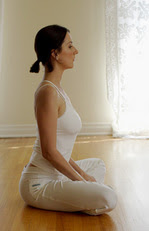Jala Neti • Nasal Cleansing

Jala Neti • Nasal Cleansing Most colds and viruses are breathed in through the nose. From there they work their way through our system to the throat, chest, and into the entire respiratory system. One of the most effective ways of stopping that cycle is to clean out the nasal passages. A neti pot and some lightly salted water can do the job quite thoroughly. Nasal cleansing exerts a profound physiological effect on the body and mind. On the physical level, irrigation of the nasal mucosaremoves accumulated mucus from the nostrils, associated passages and sinuses, allowing air to flow without obstruction. Regular practice of neti maintains healthy secretory drainage mechanisms of the entire ear, nose and throat area. This helps to ward off colds and coughs, hay fever, and tonsillitis. It builds up resistance to various diseases of the ears, eyes, and throat. Practicing neti promotes a balance between the right and left nostrils and consequently the right and left hemispheres of the bra...




